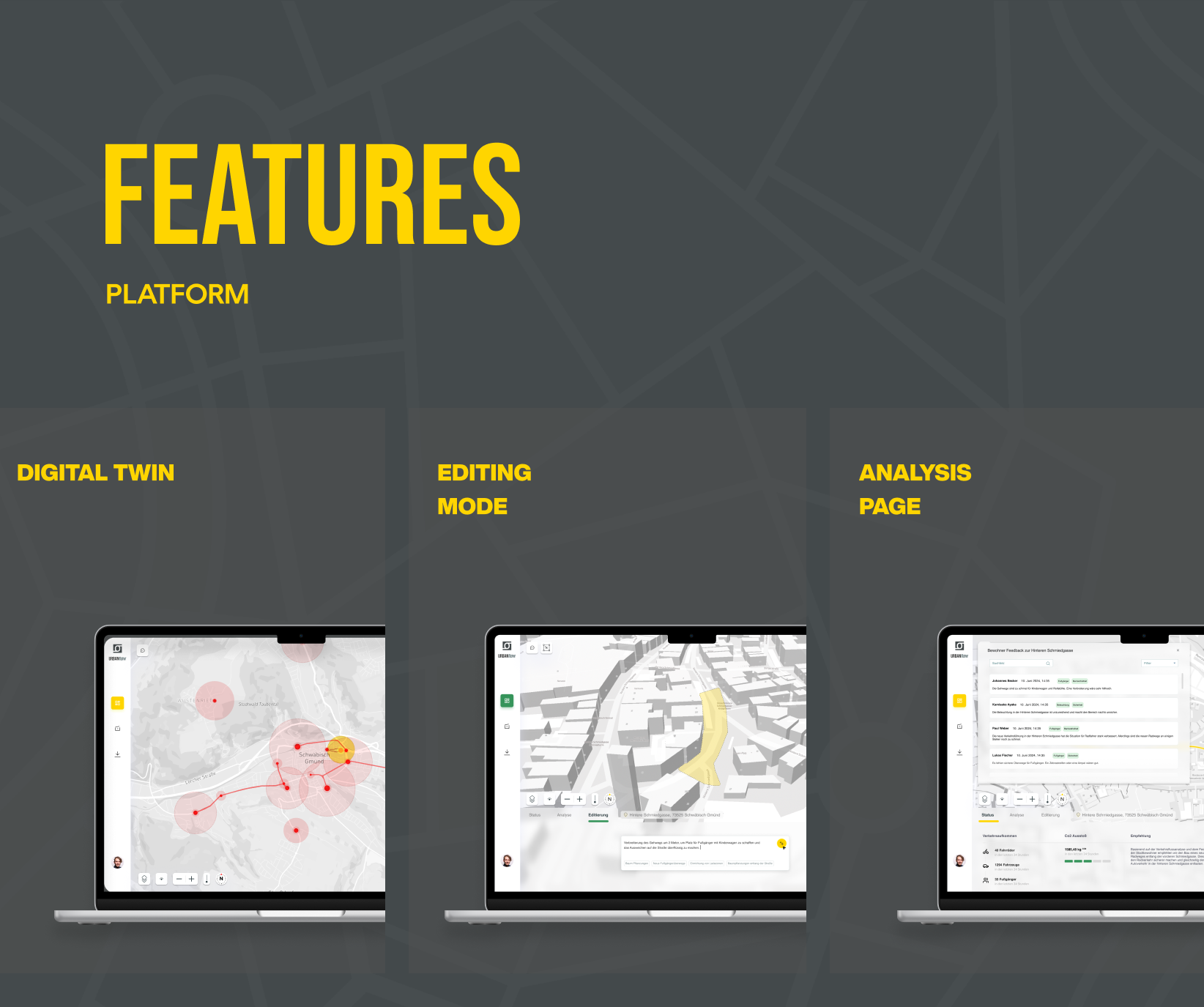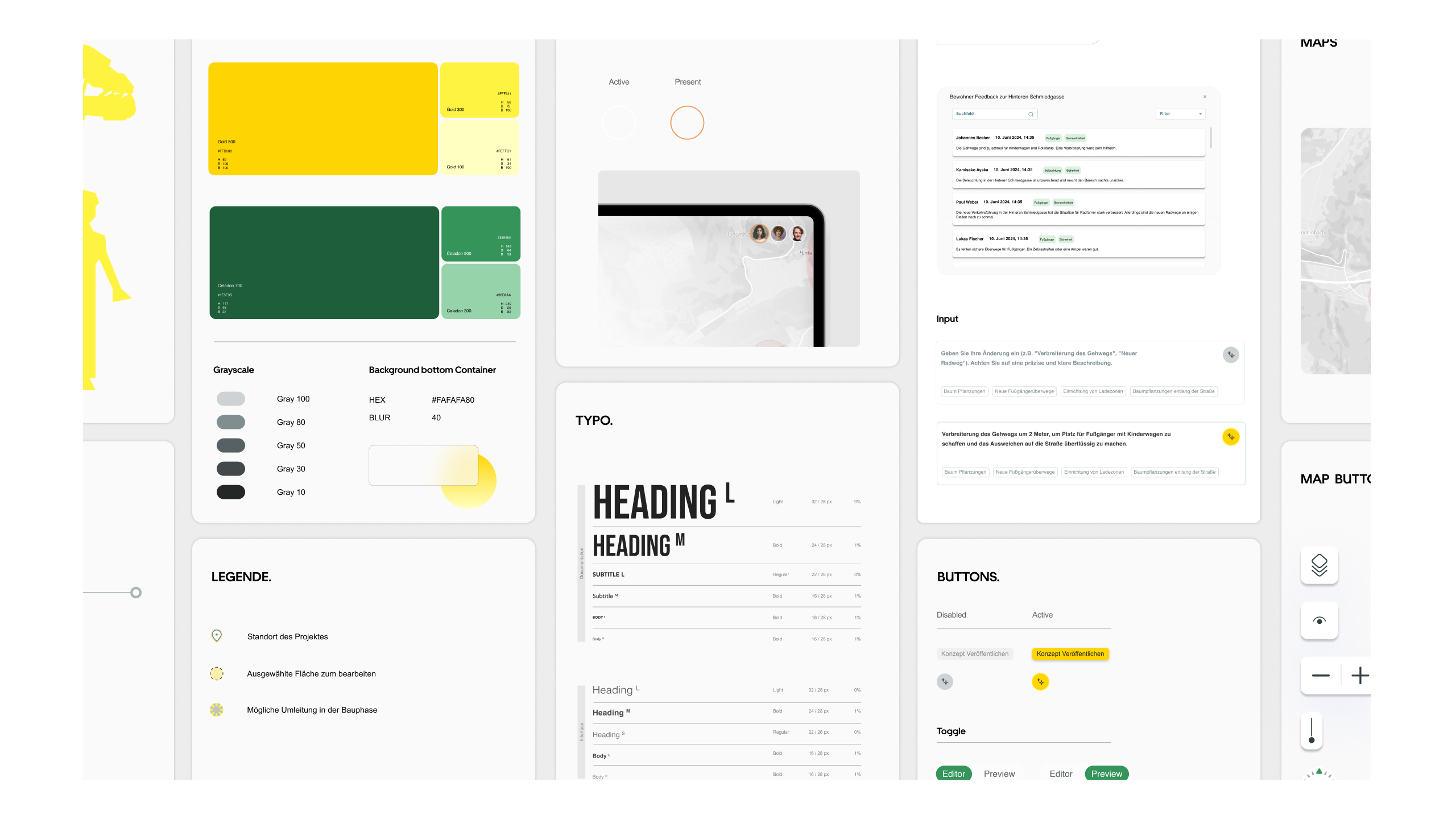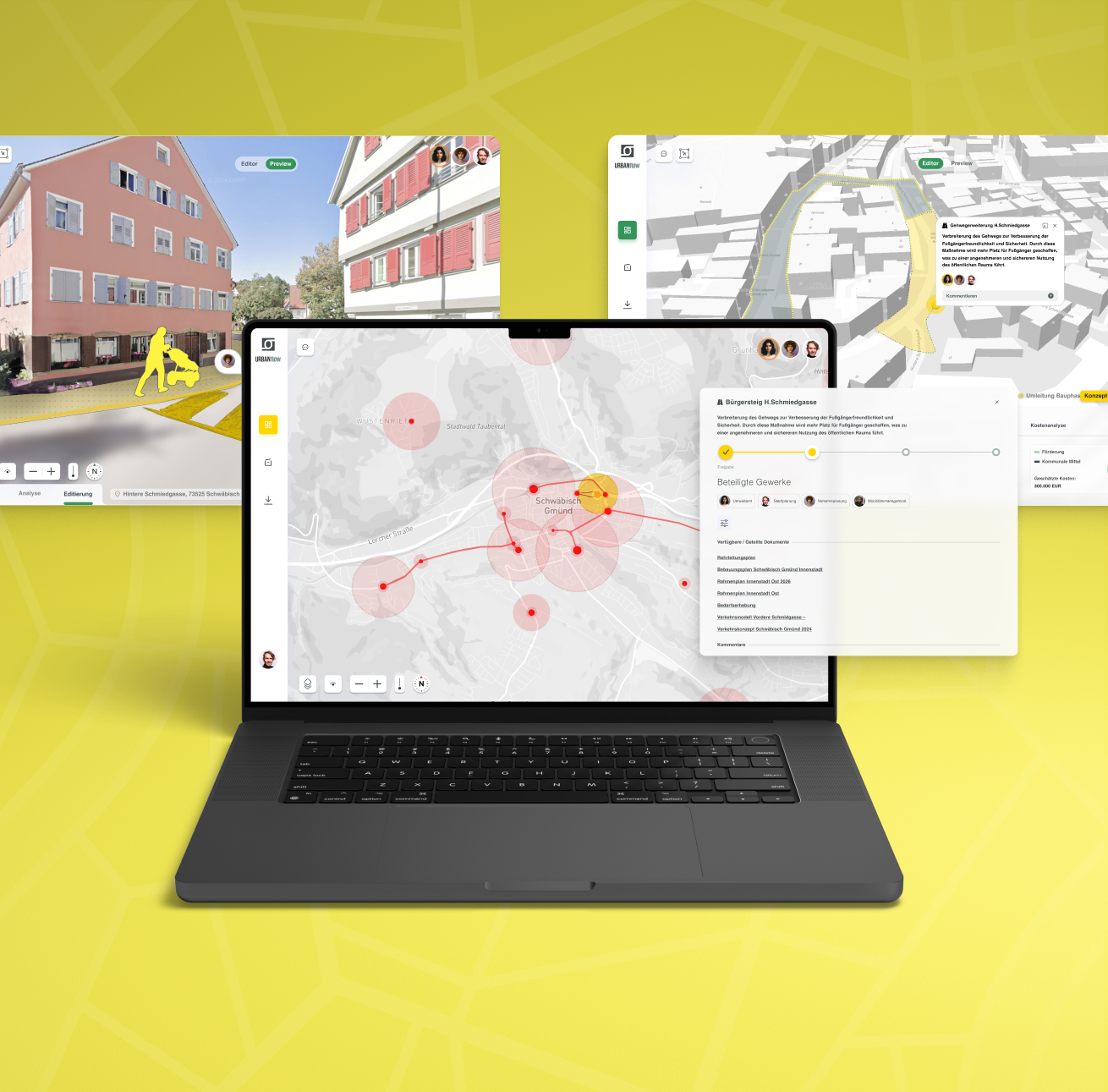
How can a city optimize its urban mobility through smart technologies to improve the quality of life for its citizens? The URBANFLOW project, in cooperation with the city of Schwäbisch Gmünd, addresses this very question.
At the core of the project is the development of a user-friendly platform that analyzes traffic flows in real-time. The goal is to enable more efficient and environmentally friendly movement within the city, reduce congestion, and sustainably improve the quality of urban life.
PROBLEM IDENTIFICATION
Environmental analysis, Brainstorming, Problem definition
RESEARCH
Market research, User research, User interviews, Expert interviews
CONCEPT DEVELOPMENT
Crazy 8, Brainstorming, Scenario development
REQUIREMENTS DEFINITION
User stories, Persona creation, Swimlane diagrams
UX DESIGN
Information architecture, User flows, Wireframing
UI DESIGN
Low fidelity prototypes, High fidelity prototypes
STRATEGY
URBANFLOW's strategy was to develop a Minimum Viable Product (MVP) that acts as an intelligent interface between the city and its road users. Instead of just managing traffic, the platform was designed to proactively help users make smarter decisions. Based on the creation of personas and user stories, we designed a system that translates complex real-time data into simple, actionable information to optimize daily commutes.
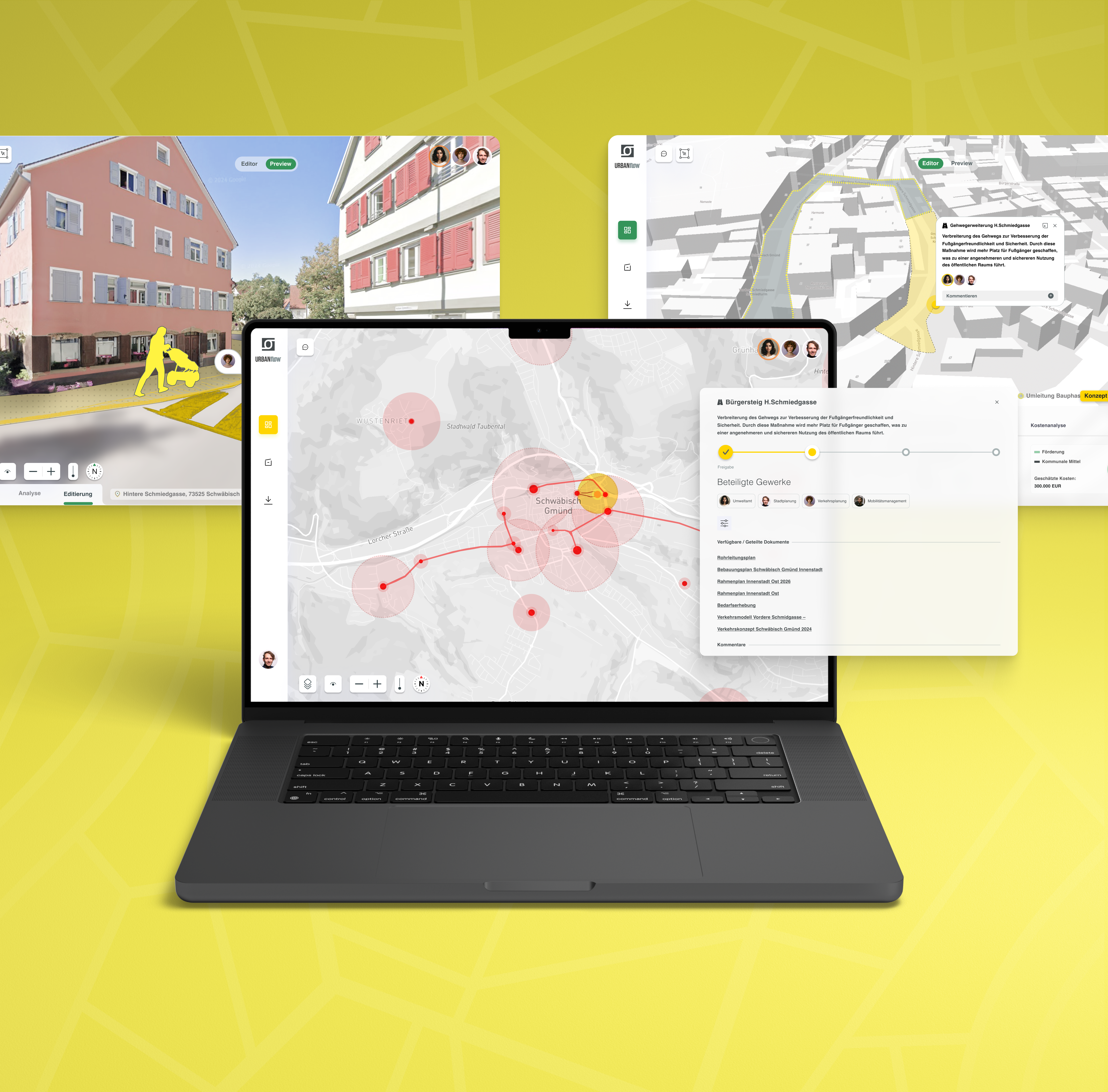
RESEARCH INSIGHTS
The research phase was designed to gain a 360-degree understanding of mobility in Schwäbisch Gmünd. We conducted a detailed environmental analysis to identify existing traffic hotspots and their impacts. In parallel, market and user research, as well as direct user and expert interviews, provided crucial insights into the needs, desires, and frustrations of commuters and residents. This combination of quantitative and qualitative data formed the foundation for the problem definition.

APPROACH
Our approach followed a structured design process. After the problem definition, we moved into concept development using creative methods like Crazy 8s, brainstorming, and scenario development. The best ideas were solidified in the requirements definition phase through user stories and swimlane diagrams. Building on this, the UX design was crafted with a clear information architecture and user flows, before the final low and high-fidelity prototypes were created in the UI design phase.
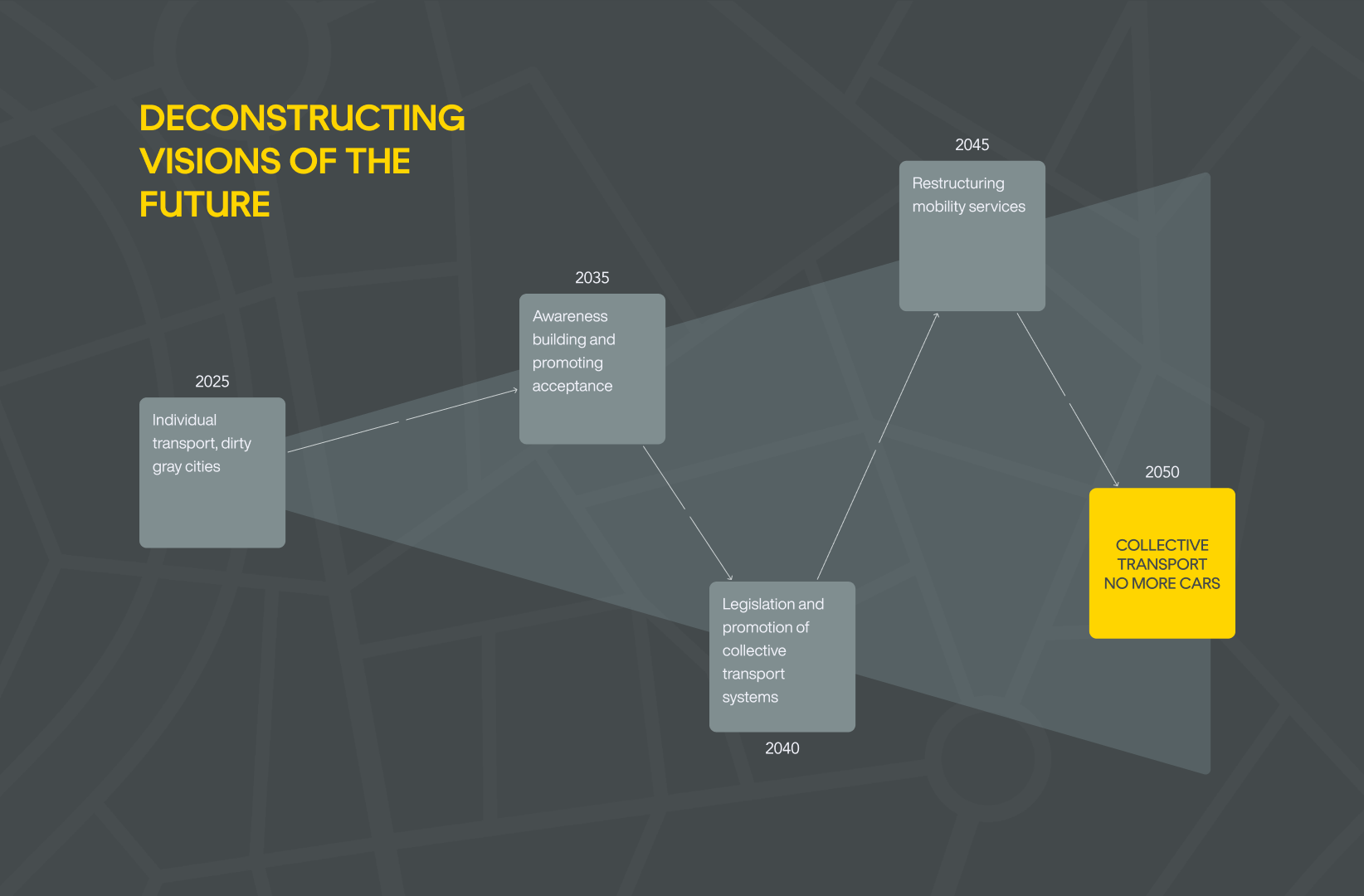
DESIGN
The design of URBANFLOW focuses on maximum clarity and user-friendliness. The developed information architecture ensures that users can quickly and intuitively access the data relevant to them. Detailed user flows and wireframes served as the blueprint for a seamless interaction. The final visual design, realized in a high-fidelity prototype, presents real-time traffic data on an interactive map and offers personalized route suggestions that put the user at the center.

LEARNINGS
URBANFLOW demonstrated how essential the user-centered processing of data is for the success of smart city applications. The key learnings are:
- Data Visualization is Key: The greatest challenge and added value lie in visualizing complex live data in a way that is immediately understandable and useful for every user.
- User Acceptance Through Participation: The early involvement of citizens and experts through interviews is crucial to ensure that the technological solution meets the real needs of the people and is adopted.
- The Process Creates Trust: A transparent and methodical process from analysis to prototype is essential for building trust with cooperation partners like a city administration for innovative digital solutions.
